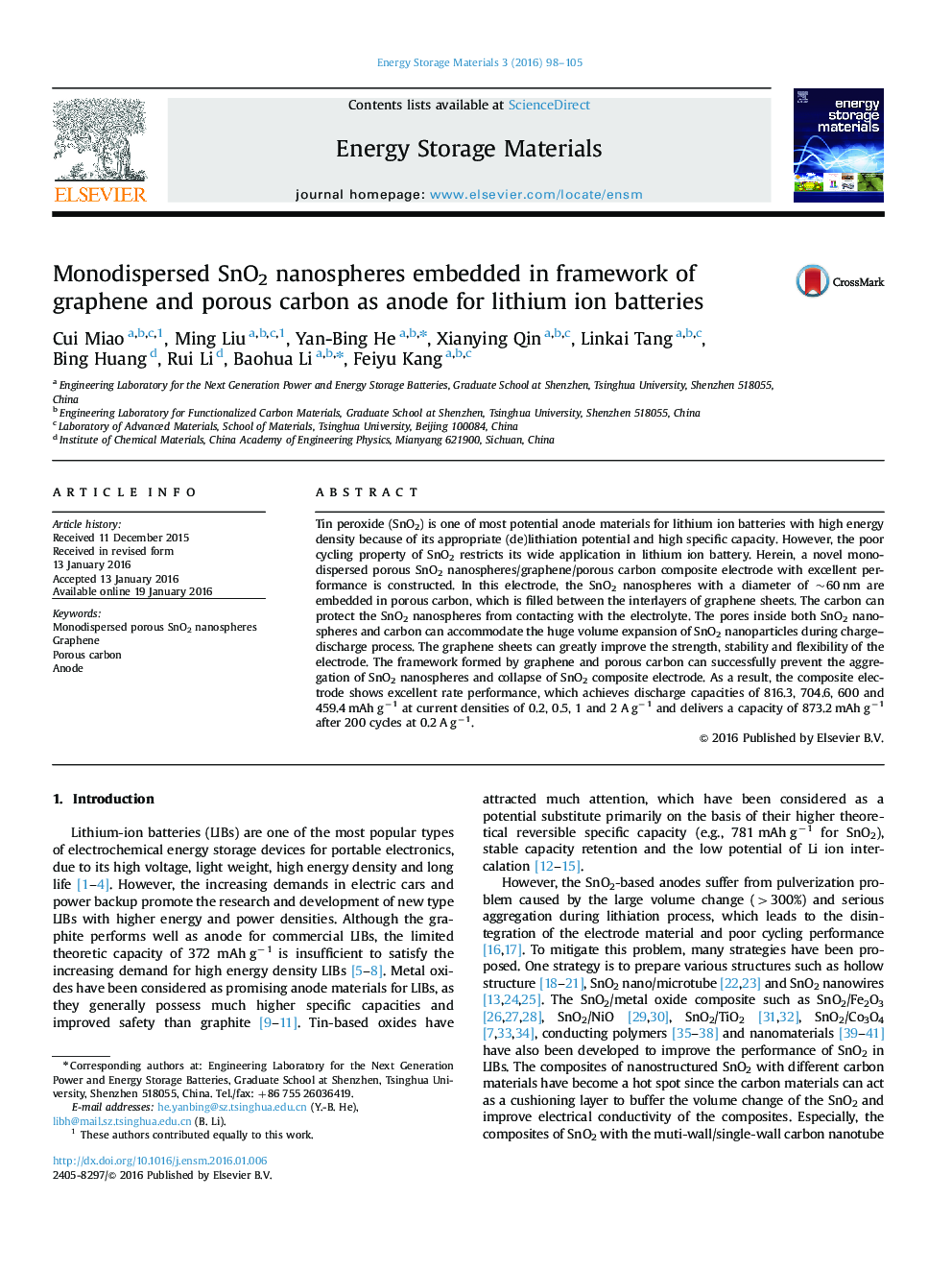| Article ID | Journal | Published Year | Pages | File Type |
|---|---|---|---|---|
| 1564635 | Energy Storage Materials | 2016 | 8 Pages |
Abstract
Tin peroxide (SnO2) is one of most potential anode materials for lithium ion batteries with high energy density because of its appropriate (de)lithiation potential and high specific capacity. However, the poor cycling property of SnO2 restricts its wide application in lithium ion battery. Herein, a novel monodispersed porous SnO2 nanospheres/graphene/porous carbon composite electrode with excellent performance is constructed. In this electrode, the SnO2 nanospheres with a diameter of ~60 nm are embedded in porous carbon, which is filled between the interlayers of graphene sheets. The carbon can protect the SnO2 nanospheres from contacting with the electrolyte. The pores inside both SnO2 nanospheres and carbon can accommodate the huge volume expansion of SnO2 nanoparticles during charge-discharge process. The graphene sheets can greatly improve the strength, stability and flexibility of the electrode. The framework formed by graphene and porous carbon can successfully prevent the aggregation of SnO2 nanospheres and collapse of SnO2 composite electrode. As a result, the composite electrode shows excellent rate performance, which achieves discharge capacities of 816.3, 704.6, 600 and 459.4 mAh gâ1 at current densities of 0.2, 0.5, 1 and 2 A gâ1 and delivers a capacity of 873.2 mAh gâ1 after 200 cycles at 0.2 A gâ1.
Keywords
Related Topics
Physical Sciences and Engineering
Energy
Fuel Technology
Authors
Cui Miao, Ming Liu, Yan-Bing He, Xianying Qin, Linkai Tang, Bing Huang, Rui Li, Baohua Li, Feiyu Kang,
